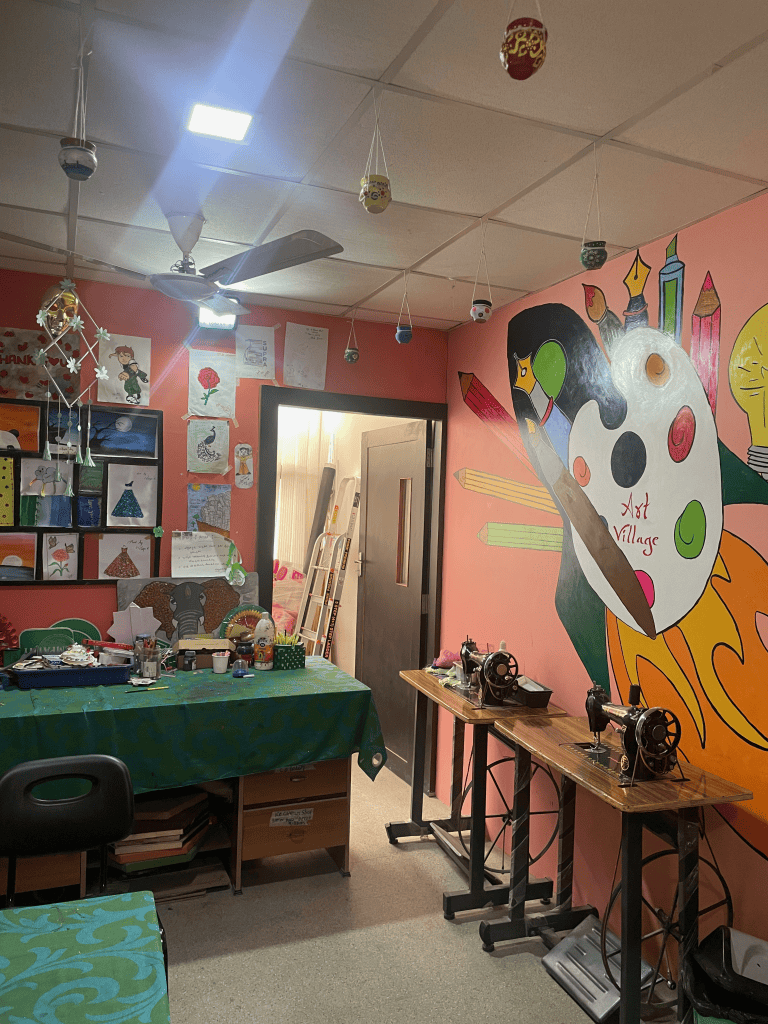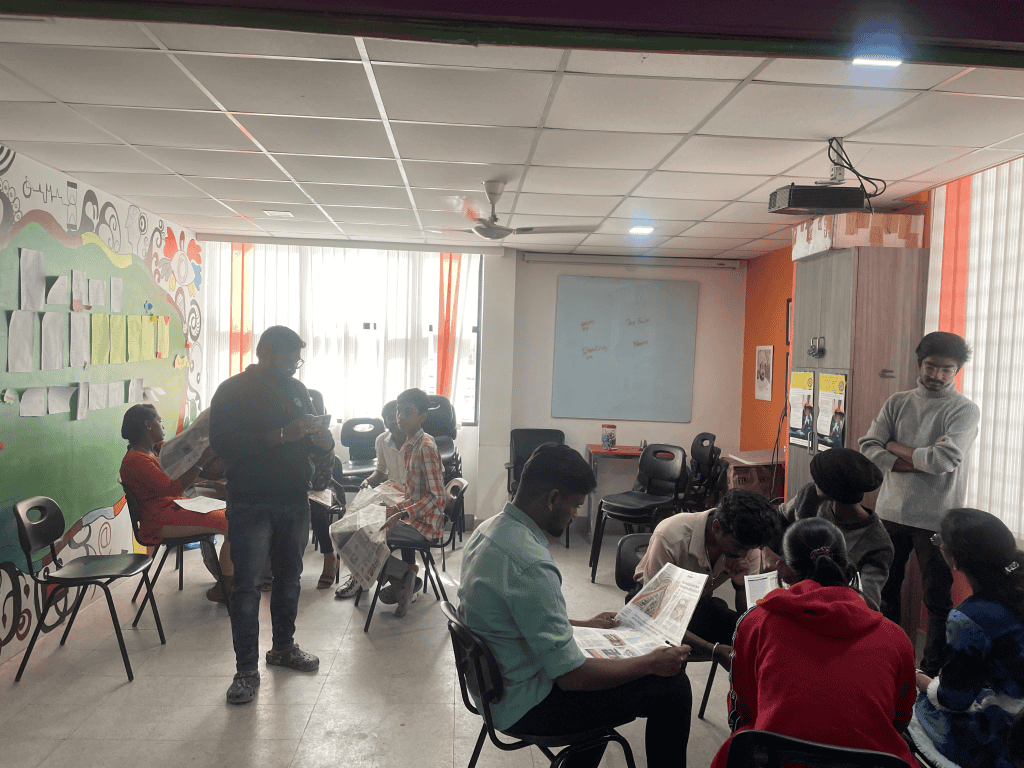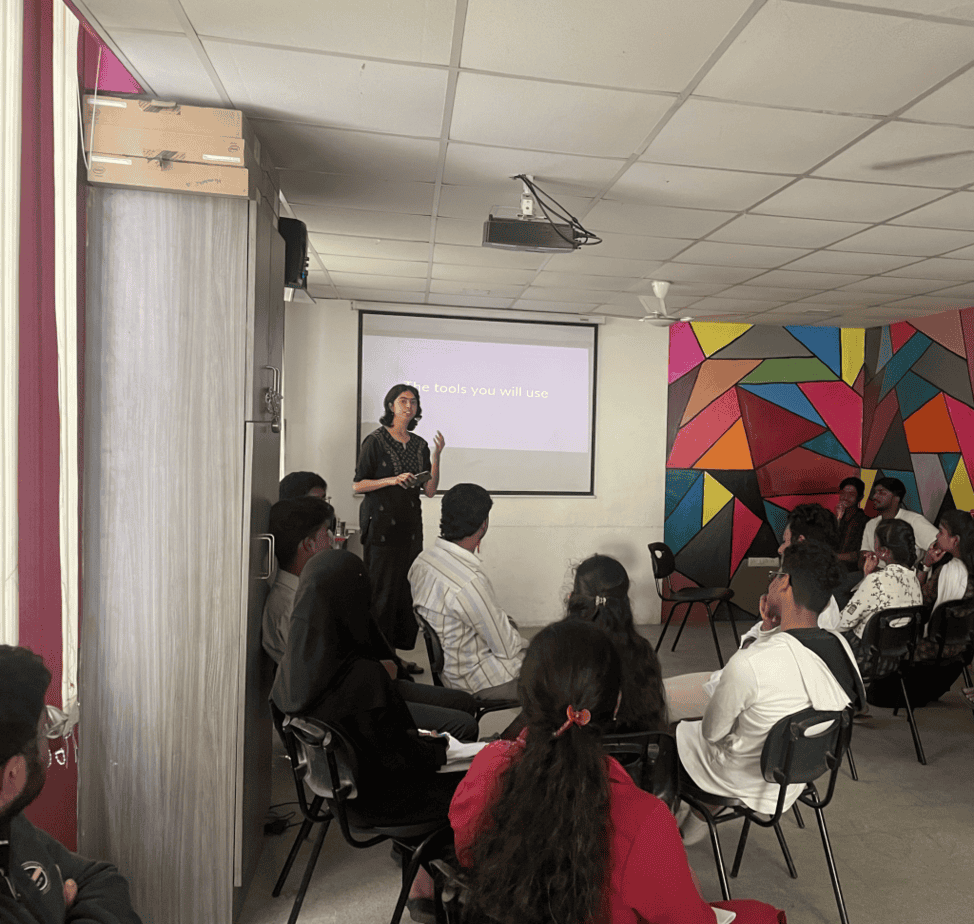We recently partnered with Dream a Dream, an NGO empowering young people from marginalised backgrounds, to host a session on storytelling for 25 participants on December 29th in Bommanahalli, Bengaluru. In the session, we explored the role of media in their lives and how they can share their own stories. Through engaging, hands-on activities, participants learned how to brainstorm ideas, develop topics, and use their mobile phones as tools for impactful storytelling. Prajna Dutt, a volunteer who helped with the event, shares her experience.
It was a narrow lane leading to the venue, but there was quite a buzz even on a year-end, cold, frosty Sunday morning. I was looking for Dream a Dream Foundation’s centre in Bommanahalli. The Thriving Centre helps change the experience of learning for children and young adults from vulnerable backgrounds through various after-school tution support, co-curricular and career connect programmes as well as counselling for students and their parents.
The place looked like a residential building, with two-wheeler vehicles parked inside. I took the stairway to the first floor. The contrast that I was met with between the broken and chaotic streets (visualise any overcrowded, narrow-alleyed area of Bangalore) that brought me here and the artsy, colourful, organised, cheerful place this was, is better absorbed using pictures.

The Oorvani team with its years of experience in inclusion of local voices in media, was there to conduct a media literacy programme and to enable the students to bring out their stories.
We explored the various facilities of the institution. Despite it being 10 a.m. on a Sunday morning, some students were already there. One kid was studying, two were engrossed in a game of carrom, another was working on a computer. Meanwhile, we chatted and waited for the rest of the students to join.
By 10:30 a.m., the coordinator, Dinesh, kicked things off with fun socializing games, and everyone played along enthusiastically. As the day progressed, the group grew to include 25 students aged 15 to 20. The workshop began with an overview of mass media and its role and current challenges, presented by Meera. We then delved into the different types of media content through a fun activity using newspapers, emphasising the role and importance of local media.

Next, we explored the elements that constitute a story and how to create one based on a topic or issue. We discussed methods for eliciting information and showcased exemplary video and print content. Each segment of a story was broken down, with explanations on what to focus on, in each part. The final segment of the day covered video-making. This included insights into camera angles, types of shots, tools to use, lighting, and framing visuals effectively.

The session was interspersed with engaging exercises. Students were divided into five groups, each guided by a facilitator—Meera, Bhanu, Gangadharan, Savitha, and Prajna from Oorvani. One exercise involved identifying and categorizing content from Kannada and English newspapers into categories like ‘Newsy,’ ‘Impacts Me,’ ‘Interesting,’ and others.
Another exercise tasked each group with deliberating and agreeing upon a topic for creating a story and create a story format using the principles of story structure and video formatting they had just learned. While the subject of the workshop was ‘Media Literacy,’ the day offered much more. It taught the children to communicate, negotiate, collaborate, and build confidence. It was a holistic learning experience—one that was as enriching as it was enjoyable.
Oorvani’s Civic Learning Hub provides citizens with skills, resources and tools for collaborative change making. Our storytelling and communications module provides a structured way to understanding local issues and expressing grassroots experiences and insights through citizen journalism. For more information, see oorvani.org/learning

